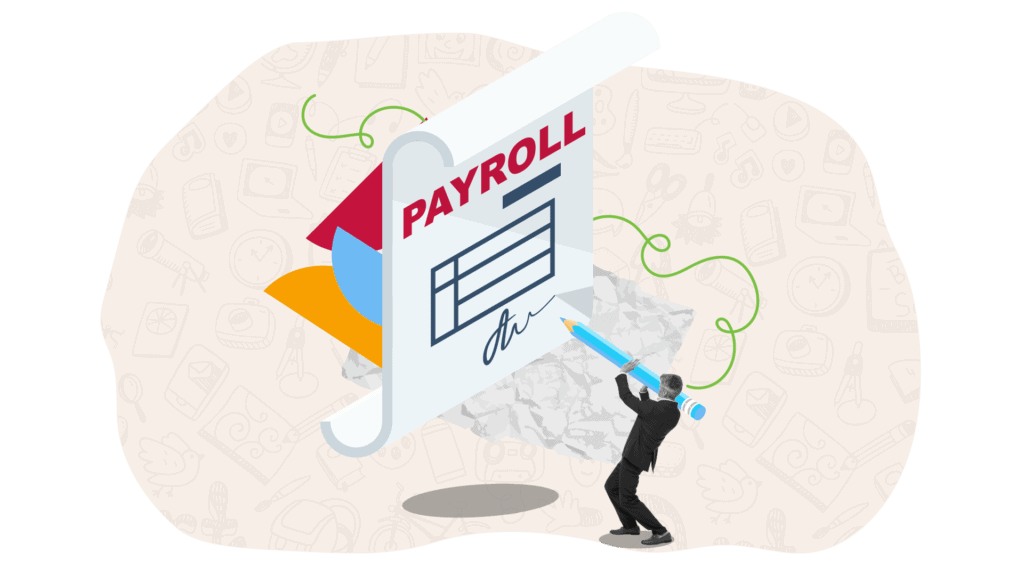
A Compliant and Flexible HR & Payroll Procurement Route for Schools and Trusts: Education Buying’s DPS
Even though it feels like there’s plenty of time to think about procurements for the new academic year, now is the ideal time to start planning how to meet your HR and payroll needs for the 2025–26 academic year and beyond. Education Buying’s HR & Payroll Dynamic Purchasing System (DPS) offers a compliant, efficient, and flexible way to secure the essential services your school will require.
The HR & Payroll DPS provides a wide range of services, from fully outsourced payroll to strategic HR and employment law support, including HR databases and management systems. Whether your school or trust needs a full-service solution or more targeted support, the DPS allows you to tender in line with the Public Contracts Regulations 2015, while reducing the administrative effort that tendering usually involves.
One of the key advantages of the DPS is its flexibility. Unlike traditional tendering routes, the DPS allows new suppliers to join at any time. This means schools can invite their preferred local or incumbent suppliers to join and participate in the competition. The electronic process is simple to follow, with pre-vetted suppliers and easy-to-use templates that guide you through the Further Competition stage.
Key Requirements of a Payroll System for Schools
When selecting or implementing a payroll system for schools, several key requirements need to be considered to ensure that it meets both statutory obligations and the specific needs of education. These requirements can vary depending on the size of the school or trust, the number of employees, and the complexity of payroll operations, but the following are the essential features and considerations:
- Statutory Compliance
Schools must comply with various payroll regulations, which means the payroll system must be able to:
- Process PAYE (Pay As You Earn) taxes: Automatically calculate and deduct income tax and National Insurance contributions for employees, ensuring accurate reporting to HMRC.
- Pension Management: Handle contributions to both the Teachers’ Pension Scheme (TPS) and Local Government Pension Scheme (LGPS). This includes calculations, auto-enrolment, and reporting.
- Statutory Payments: Accurately process statutory payments such as sick pay (SSP), maternity/paternity pay (SMP/SPP), and adoption pay.
- Real-Time Information (RTI): Submit payroll data to HMRC in real-time, ensuring all necessary returns are submitted accurately and on time.
- Holiday and Leave Tracking: Track holiday entitlement, public holidays, and other leave such as maternity and sick leave in line with employment law.
- Pension Schemes Integration
For schools, it’s critical that the payroll system integrates with both:
- Teachers’ Pension Scheme (TPS): Calculating and reporting pension contributions, especially for teaching staff.
- Local Government Pension Scheme (LGPS): Handling pension contributions for support and non-teaching staff. The system should be capable of managing the complexities of different pension schemes, including handling auto-enrolment, opt-outs, and contributions for both employers and employees.
- School-Specific Contract Types
Schools often have a mix of permanent, temporary, part-time, and contract staff. The payroll system must accommodate:
- Multiple Employment Types: Handling complex employment contracts, such as those for teachers working part-time, on temporary contracts, or with term-time-only pay schedules.
- Variable Pay Calculations: Managing hourly rates, additional duties (e.g., after-school clubs or extracurricular activities), overtime, and allowances (e.g., for heads of department or extra responsibilities).
- Multiple Funding Sources
Payroll systems for schools need to be capable of handling payments from various funding sources. This includes:
- Multiple Budgets: Allowing different employees’ salaries to be allocated to specific budgets, departments, or funding streams (such as government grants).
- Cost Centre Allocations: Managing payroll by allocating employees’ pay to different cost centres (departments or budget lines) for accurate financial reporting.
- Reporting and Audit Capabilities
A good payroll system must provide robust reporting capabilities that can:
- Generate Custom Reports: Produce detailed payroll reports for different departments, school leadership, and external auditors, showing breakdowns of wages, deductions, pension contributions, etc.
- Audit Trail: Maintain a clear audit trail for financial transparency and accountability, including historical data for compliance with internal and external audits.
- User-Friendly Interface
For schools with limited HR and payroll expertise, ease of use is essential:
- Simple Interface: The system should have an intuitive user interface that allows HR and finance teams to manage payroll processes efficiently, with minimal training.
- Accessibility: It should offer role-based access, so different staff can securely access relevant sections (e.g., HR staff vs. finance staff).
- Automation and Accuracy
Automation is vital in ensuring payroll accuracy and reducing administrative burden:
- Automated Calculations: Automatic updates to tax codes, National Insurance rates, and pension contributions to avoid errors.
- Payslip Generation: Automatically generate and distribute payslips to employees either electronically or in print, ensuring transparency and compliance.
- Automation of Statutory Reporting: Automate the submission of mandatory reports such as P60s, P45s, and RTI submissions to HMRC.
- Employee Self-Service
A modern payroll system should include an employee self-service portal, allowing staff to:
- Access Payslips: View and download payslips and P60 forms.
- Manage Personal Details: Update personal information, tax codes, and pension options.
- Request Leave: Submit and track holiday or leave requests, ensuring the system is fully integrated with the payroll for accurate wage calculations.
- Data Security and GDPR Compliance
Given the sensitivity of payroll data, the system must comply with data protection regulations, including:
- GDPR Compliance: Ensuring that the handling of personal employee data is compliant with the General Data Protection Regulation (GDPR), with data stored securely and accessible only to authorised personnel.
- Data Encryption: Using encrypted communication and storage methods to protect payroll data from breaches.
- Backup and Recovery: Ensuring there are reliable backup and disaster recovery procedures in place for payroll data.
- Integration with Other Systems
The payroll system should integrate seamlessly with other management tools used by the school or trust:
- HR Systems: Syncing with the school’s HR systems to manage employee records, performance management, and leave tracking.
- Accounting Software: Integrating with financial management systems (like FMS) to streamline budget management and reporting.
- Time and Attendance Systems: If the school uses time-tracking software, the payroll system should be able to integrate and automate pay calculations based on attendance data.
In summary, the payroll system for schools must be compliant with statutory regulations, able to handle the complexities of school-specific contracts, and integrate with other systems while offering flexibility and automation. Investing in the right payroll system ensures not only compliance but also streamlines processes, reduces administrative burden, and improves transparency across the school or trust.
Key Requirements of a HR System for Schools
An effective HR system in schools must address the unique needs of education, ensuring compliance with regulations, efficient management of staff, and supporting overall operational goals. Here are the key requirements of an HR system for schools:
- Compliance with Employment and Education Legislation
Schools must comply with a range of employment laws, safeguarding regulations, and education-specific requirements. A robust HR system should include:
- Employment Law Compliance: Ensure adherence to UK employment laws, including contracts, working hours, equal pay, and anti-discrimination policies.
- Safer Recruitment: Integrate safer recruitment processes, including criminal record checks (DBS), right-to-work checks, and qualifications verification in line with safeguarding protocols.
- Statutory Reporting: Ensure compliance with reporting requirements, including gender pay gap reporting and safeguarding records.
- Recruitment and Onboarding
Schools often have varying recruitment needs, from teaching staff to administrative roles. The HR system must efficiently manage the recruitment and onboarding processes:
- Vacancy Management: Post job vacancies and track applications, including integrating with job boards and school websites.
- Applicant Tracking: Track candidates throughout the recruitment process, from application to interview, assessment, and offer.
- Onboarding: Automate onboarding for new staff, including document collection (DBS, qualifications, etc.), contract generation, induction schedules, and training requirements.
- Staff Record Management
A comprehensive HR system should securely store and manage employee data:
- Centralised Database: Maintain up-to-date staff records, including personal details, qualifications, contracts, and professional development.
- Attendance and Leave Tracking: Manage staff attendance, including sick leave, annual leave, maternity/paternity leave, and time off for professional development or training.
- Document Storage: Store essential documents such as employment contracts, appraisal records, performance reviews, and training certifications in a secure system.
- Performance Management and Appraisals
Effective performance management is critical for schools to ensure teaching quality and staff development:
- Appraisal Management: Schedule and manage regular performance appraisals for teaching and non-teaching staff, aligning them with school goals and personal development plans.
- Goal Setting and Tracking: Facilitate setting personal and professional development goals and track progress throughout the year.
- Feedback and Evaluation: Provide tools for gathering feedback from peers, students, and senior leadership teams to support professional development and performance reviews.
- Professional Development and CPD (Continuing Professional Development)
Supporting staff with professional development opportunities is crucial for schools:
- CPD Tracking: Record staff training, CPD hours, and qualifications, ensuring that staff meet statutory training requirements.
- Training Management: Schedule and track internal and external training programs, including mandatory safeguarding training and subject-specific CPD.
- Development Plans: Enable staff to set development goals and track progress through appraisals and training records.
- Payroll and Pension Integration
HR systems in schools should integrate seamlessly with payroll and pension schemes:
- Payroll Integration: Ensure integration with payroll systems for accurate and automated salary payments, deductions, and pension contributions.
- Pension Management: Support contributions to the Teachers’ Pension Scheme (TPS) and the Local Government Pension Scheme (LGPS), including auto-enrolment and pension calculations.
- Absence and Leave Management
Managing absences efficiently is essential in ensuring that schools operate smoothly:
- Absence Tracking: Track and record all forms of absence, including sickness, holiday, maternity/paternity leave, and unauthorised absences.
- Reporting: Generate absence reports to identify patterns or trends, such as frequent short-term absences, which may require intervention or support.
- Leave Entitlement Calculations: Automatically calculate leave entitlements for staff, especially for term-time-only employees.
- Workforce Planning and Budgeting
Effective workforce management ensures that schools can allocate resources efficiently and manage staffing costs:
- Staffing Forecasts: Provide tools to forecast future staffing needs based on student numbers, curriculum changes, and budget constraints.
- Budget Monitoring: Track staffing costs, including salaries, overtime, supply teacher cover, and additional payments, ensuring they align with the school’s budget.
- Reporting and Analytics
Schools require detailed reporting to manage staff effectively and ensure compliance:
- Custom Reports: Generate reports on various HR metrics, including staff turnover, absence rates, training completion, and recruitment activities.
- Real-Time Dashboards: Provide real-time data on HR metrics, allowing school leadership to make informed decisions.
- Benchmarking: Compare staffing levels, salaries, and other key metrics against other schools or national standards.
- Employee Self-Service Portal
An employee self-service portal is a valuable feature that enables staff to manage their HR-related tasks efficiently:
- Personal Information Updates: Allow employees to update their personal details, tax information, and bank details directly.
- Leave Requests: Enable staff to submit and track leave requests, including holidays and sick leave.
- Payslip Access: Provide staff with easy access to payslips, P60s, and other payroll-related documents.
- Training and Development: Give staff the ability to view available training courses and track their professional development records.
- GDPR Compliance and Data Security
Given the sensitive nature of employee information, the HR system must comply with the General Data Protection Regulation (GDPR):
- Data Security: Ensure that all personal data is stored securely with encryption and access controls.
- GDPR Compliance: Implement tools to manage data subject requests, such as access, correction, or deletion of personal data.
- Retention Policies: Automate data retention policies to ensure that employee records are kept only as long as necessary.
An HR system in schools must go beyond traditional HR functions, addressing the complexities of the education sector, such as safer recruitment, pension management, and staff development. With features ranging from compliance and record management to performance tracking and employee self-service, a well-rounded HR system is essential for efficient school operations.
Education Buying’s HR & Payroll Suppliers
Education Buying’s HR & Payroll DPS can offer all the services you need for your school’s system via its fantastic range of suppliers! What’s more, if there is a particular supplier you would like to enter the competition that’s not already in the DPS, you can invite them in. These suppliers are pre-vetted to ensure they meet the high standards required by schools and trusts, and their services are designed to simplify the often complex processes of managing HR and payroll.
Through the HR & Payroll DPS, schools have access to a wide variety of options, ensuring they can find the right solution to meet their needs. You can find a list of current suppliers on our DPS here: Simplify Your HR & Payroll Tender Process with DPS Education Buying
Why Plan Early?
- Compliance: Secure contracts that comply with Public Contracts Regulations 2015.
- Flexibility: Invite new suppliers to the DPS at any time, ensuring your preferred or incumbent suppliers can participate.
- Efficiency: Save time with pre-vetted suppliers and easy-to-follow templates for Further Competitions.
- Support: Education Buying’s team offers expert guidance throughout the process, with access to a secure e-procurement portal and ongoing supplier management.
Even though September 2025 may seem far away, early planning will give you more time to explore your options and ensure a smooth procurement process. Schools and trusts across the UK are encouraged to join the HR & Payroll DPS today, ensuring they are well-prepared for the 2025–26 academic year and beyond.
Education Buying provides comprehensive support, including access to our secure e-procurement portal and expert guidance to ensure your contracts are executed smoothly. Start planning for September 2025 by joining the HR & Payroll DPS and simplify your procurement process today.





